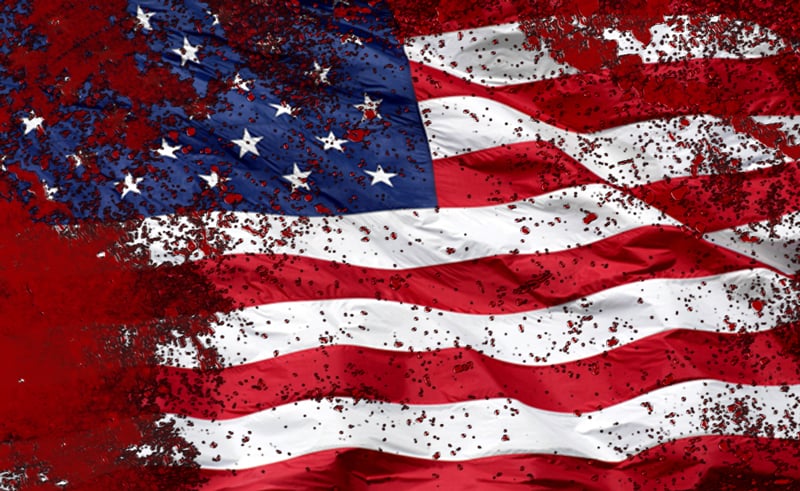This started out as an Independence Day idea, to be released on the 4th of July. What better thing for horror fans to celebrate on this day than a roster of the most important American Independent films in history. And, per usual for me and my dead lists, I got a little carried away… so Happy July 10th! (close enough)
If you give somebody a million dollars, and tell them, I need a successful movie and you have three months to do it, there are few better options than to go the horror route. The track record speaks for itself. Self-funded independent films have a long and proud history of delivering maximum emotional value for the investment.
Science Fiction films will require a larger FX budget. Comedies are reliant upon the star power of known performers. You could try and shoot the moon with an Oscar worthy drama, but likely if even you can get to the red carpet, it’s unlikely to be a huge money maker. Your ability to push boundaries and do what you want to do is in independent horror films.
How do you successfully create a winner with essentially lunch money and a camera? Cast up-and-coming actors who will work for the opportunity. Get a good location scout, and be willing to travel and keep your production team lean and mean. Use your friends if you have to. Keep the story short and to the point. Use all the tricks you have at your disposal. There will be no studio interference telling you how to make your film, though, it wouldn’t hurt to have a mentor like Roger Corman or Larry Fessenden helping you out.
And for horror, just go for it. Make it mean. Make it scary. Make it trippy. Throw caution to the wind, and the horror fans will support you. This is your time to change the genre and advance the medium. Think about what trends there are in how people watch movies. Drive in theaters? VHS rentals? Streaming ZOOM sessions? Create something that will take advantage of the new delivery methods.
You can do it. Now go scare some people!
For this list, I have gone chronologically, showing how the history of horror unfolded through independent cinema. Familiar, no… LEGENDARY… directors all started their careers on tiny budgets. Hooper, Carpenter, Craven, Raimi, and Romero. Names you know. Films you know. Budgets well under $1,000,000. I have set the threshold to a million dollars, though I bent the rules slightly for some more recent films.
You may be surprised at some of the films not on this list. Some films often credited as Independent films cost significantly more than a million dollars. Get Out, The Witch, Green Room, and Hereditary all cost at least $4,000,000 and as much as $10,000,000, though they all did very well at the box office relative to their budget. Typically Blumhouse, IFC Midnight, and A24, the darling producers of modern horror will be able to budget more money, making these films more mid-size studio productions.
I am guessing on some of the more recent offerings. IMdB does not list the budgets for most of the films from the past ten years. So, we’re going to use some other criteria to determine whether the independent label fits.
I also employed the criteria of: Would this show up in a film festival? Did it go straight to video/streaming/the drive-in? Did the director have to self fund the movie? Was it their first movie? The more that these answers for yes, the more it would qualify.
Some other films that I had assumed would be on this list turned out to be Canadian productions. I knew going in that Cronenberg wouldn’t be able to make this chronology, but some recent fantastic independent horror movies like The Void, Anything for Jackson, What Keeps You Alive, Blood Quantum, Pontypool, and Ginger Snaps? All Canadian. That just means we’ll have to do a Canadian Horror Dead list soon.
You’ll notice that there are two great periods for independent American horror. Hollywood studios had an iron grip on film production up through the 1960’s, with independent films largely falling into the B-movie category. Foreign offerings from France, England, Japan, and Germany started to show American film makers how to get serious with horror films again, and by the the 1970s the time was ripe for independent cinema in general, as the new rating system and changing societal values allowed for a flourishing of the independent spirit.
The 1980s saw the return of studio films and the reliance upon franchises, some of which were born out of the success stories of the 70s independent horror, particularly Halloween. The ’90s was pretty much a dry period for horror in general, and more so for the independent films. At the turn of the millennium, American Indie horror returned in strength.
Currently, there is a tremendous amount of success with foreign independent films. The festivals are filled with great features from overseas and in other languages. The big studios have also taken lessons from the indies, and are now producing better and smerter horror movies, even if a little less frenquently. Are we trending away from American Independent horror? I tend to think not, but the next few years will be interesting to track where our little genre pushing movies will be coming from.
The important thing I wanted to do here was to recall and celebrate the Indie films that have helped to shape the genre. Ready? Here we go:
It Conquered the World (1956)
Roger Corman
Los Angeles, California
(No Budget Information)
In the beginning, there was Roger Corman. The legendary maverick set out to buck the system and do things his own way. He understood how to make a movie but was tired of the old-boy network, and figured out how to squeeze minuscule budgets into crowd-pleasing matinees. Emblematic of his early work is It Conquered the World, with its undeniably silly monster and equally undeniably watchable starlet Beverly Garland. Corman proved that he had a good eye for talent as he would repeatedly show in his illustrious career by him casting young Peter Graves and Lee Van Cleef who would go on to have long and successful careers in Hollywood.
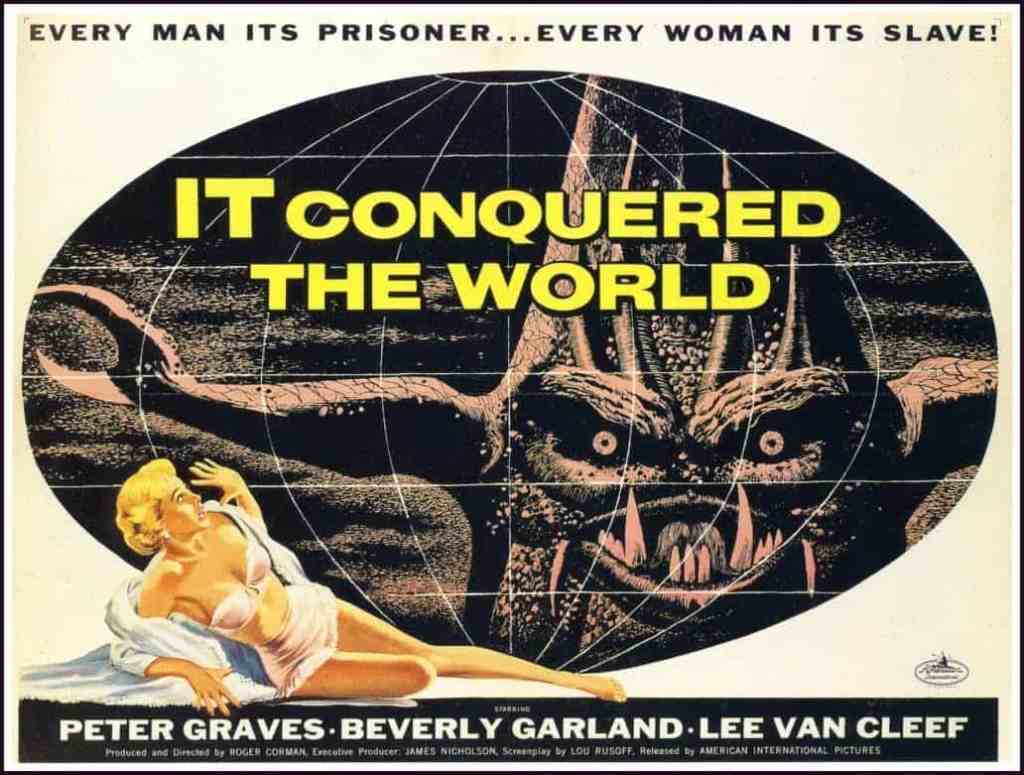
The Tingler (1959)
William Castle
Filmed in Los Angeles
Budget: $250,000
William Castle was the P.T. Barnum of Hollywood’s Silver Age. He was a mid-century hype man, a huckster snake oil salesman who knew how to brand and sell his product. The Tingler is a classic, in this regard, as Castle famously rigged theater seats with electric “joy buzzers” in the seats, paying cinema lackeys to flip the tingler switch at jump scare moments. FUN! (And a little painful) Vincent Price is in the middle of his historic run as a reliable horror character. And the “character” of William Castle was caricatured in the ’90s homage Matinee.
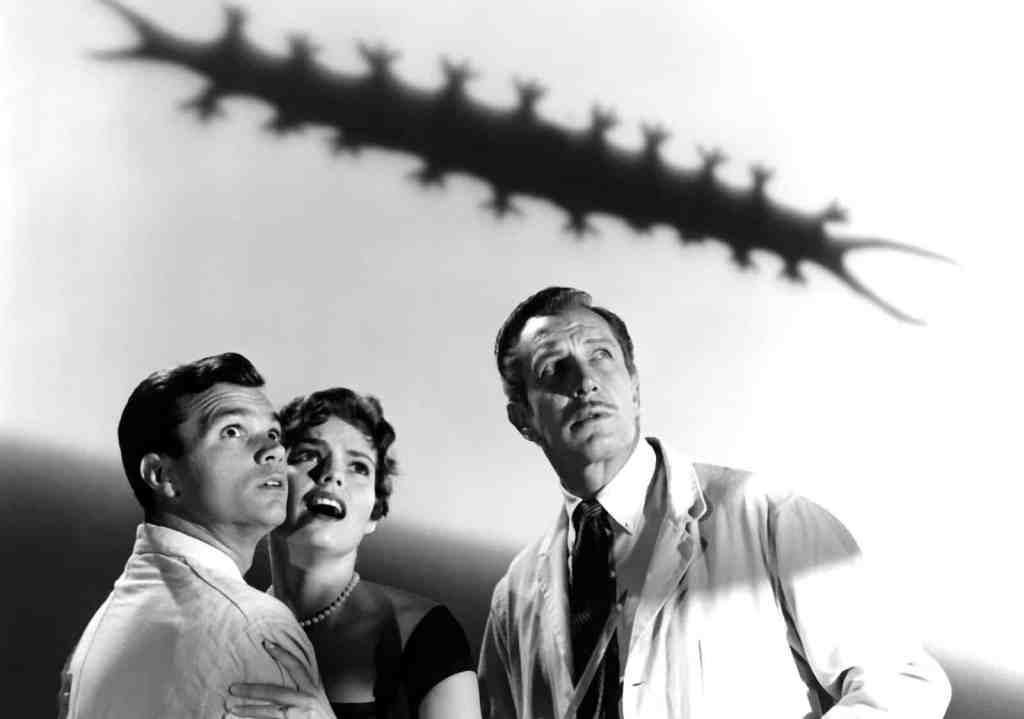
The Little Shop of Horrors (1960)
Directed by Roger Corman
Filmed in Los Angeles
Budget: $22,500
Another Corman film! The Little Shop of Horrors (Identified from its successor with the use of “The” in the title.) was notorious for being written and produced in a mere 2 1/2 days. Rumor had it that this film was the result of a bet that Corman couldn’t create a movie in this short of a timeline. Not only did he pull it off, but it also became the source for a hugely successful Broadway show, and eventually a superior movie musical. Plus, you get a young Jack Nicholson chewing up the scenery as a masochistic dental patient.
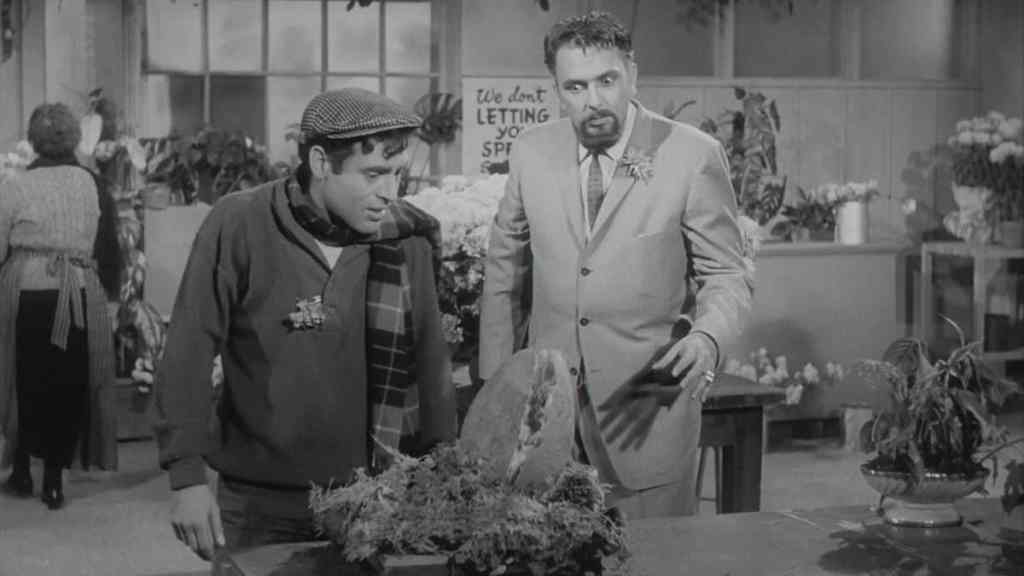
Carnival of Souls (1962)
Directed by Herk Harvey
Filmed in Magna Utah
Budget: $30,000
And here we have another one of the classic standards for independent films. The arthouse picture. It, by comparison to many of its peers, was a dreamy and haunting drama full of loneliness and regret. A woman who “survived” a car crash is seeing ghosts in a remote Utah fairground. In an era where most horror movies involved a man in a rubber suit, Carnival of Souls took itself seriously and maximized its tiny budget with great shot selection and using its small cast sparingly, juxtaposed against vast landscapes.
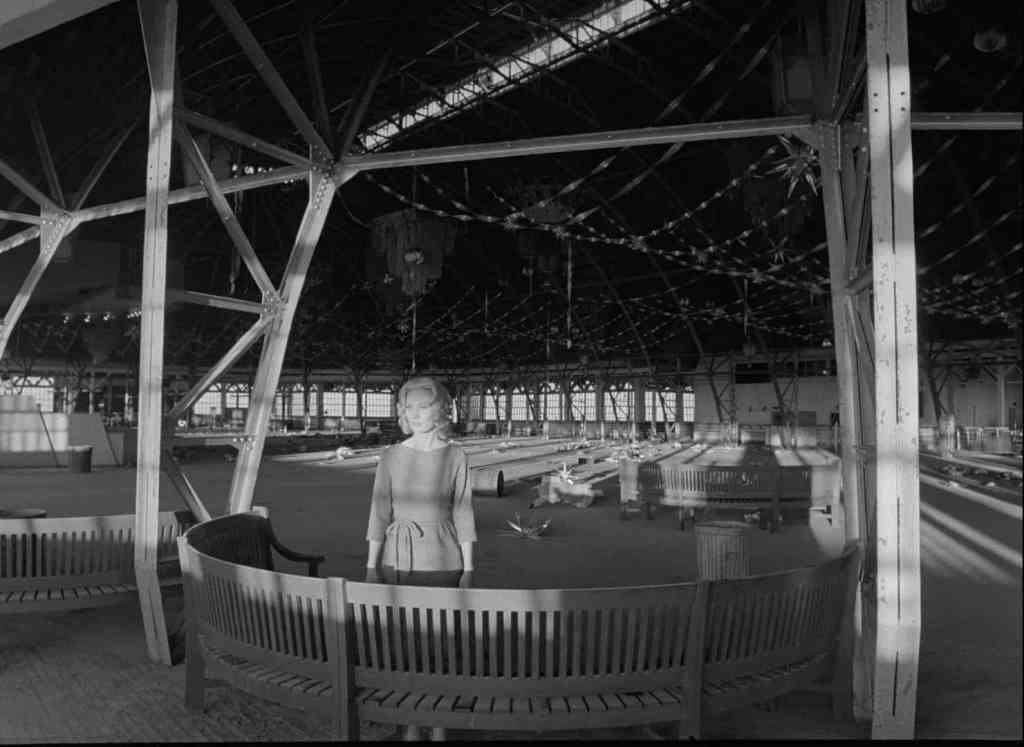
Blood Feast (1963)
Directed by Herschell Gordon Lewis
Filmed in Miami, Florida
Budget: $25,000
Herschell Gordon Lewis saw an opening. The social code was beginning to break down, and movies like Psycho, Peeping Tom, and Black Sunday helped pave the way for a bloodier path. And boy did Lewis take advantage of the new horror landscape. This is one of the earliest gory exploitation films, and it employs copious amounts of the red stuff. So. Much. BLOOD. Not just blood either, but roughly severed limbs and pure savagery. Blood Feast didn’t get widely promoted, but it set a trend in motion that would change the way horror movies would be done, forever.
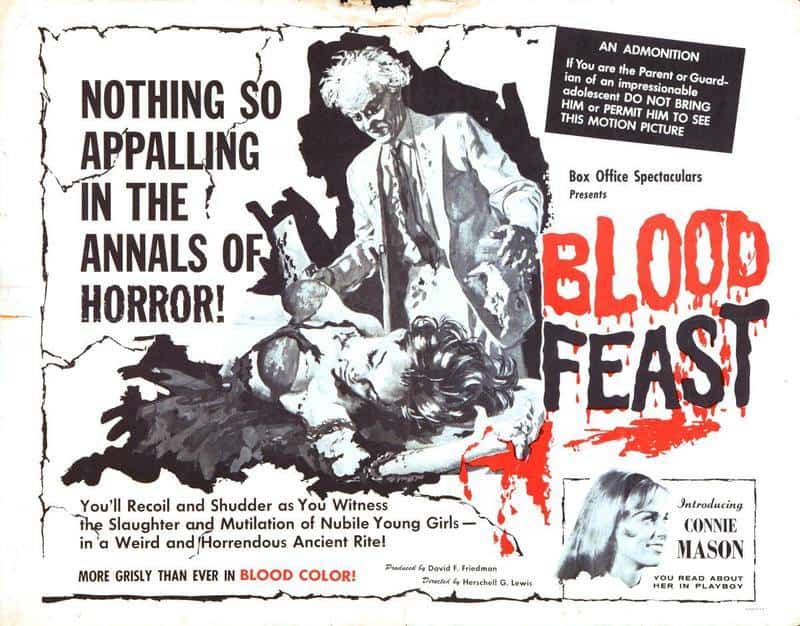
Spider Baby, or The Maddest Story Ever Told (1967)
Directed by Jack Hill
Filmed in Los Angeles
Budget: $65,000
This cult classic was the close of one legendary horror career with Lon Chaney Jr. and the introduction of another with the wild visage of a young Sid Haig. This wacky classic is still genuinely funny, and it’s wonderful to see Lon Chaney out of make-up and dare I say… loveable. This was hillbilly horror at its infancy, with a kooky twist. Spider Baby’s story of a family literally degenerating as they age is a wonderful concept that still stands as a unique story element to this day.
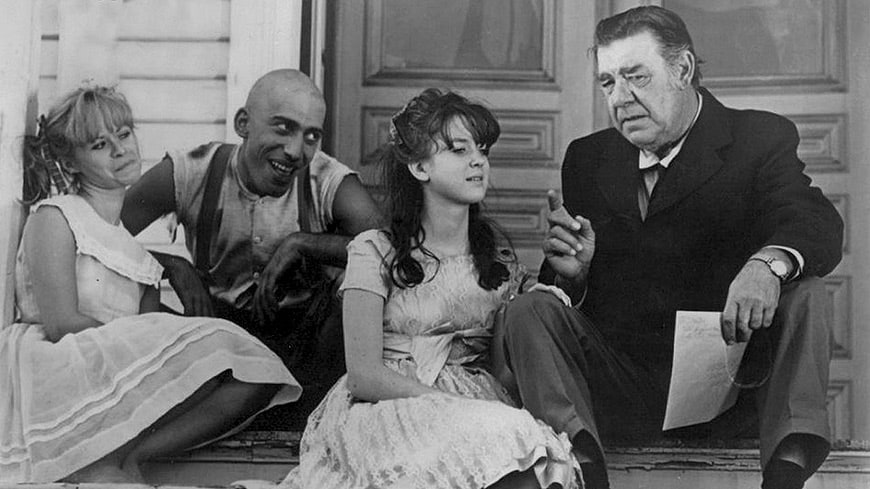
The Night of the Living Dead (1968)
Directed by George A. Romero
Filmed in Evans City Cemetery (Pittsburgh PA)
Budget: $114,000
And here it is! Perhaps the greatest and most influential independent horror movie of them all. With pardons due to some of the more commercially successful films later in the list, perhaps no other independent horror movie did a better job at pointing the way as to how to execute a low-budget powerhouse like the film that made George Romero king of the zombies. The progressive before it was cool film single-handedly re-invented the zombie film, and it also became a victim of its own low-budget status in that its licensing rights became public domain. As such it has been appropriated to be playing in the background in countless horror movies. Hey, it’s free!
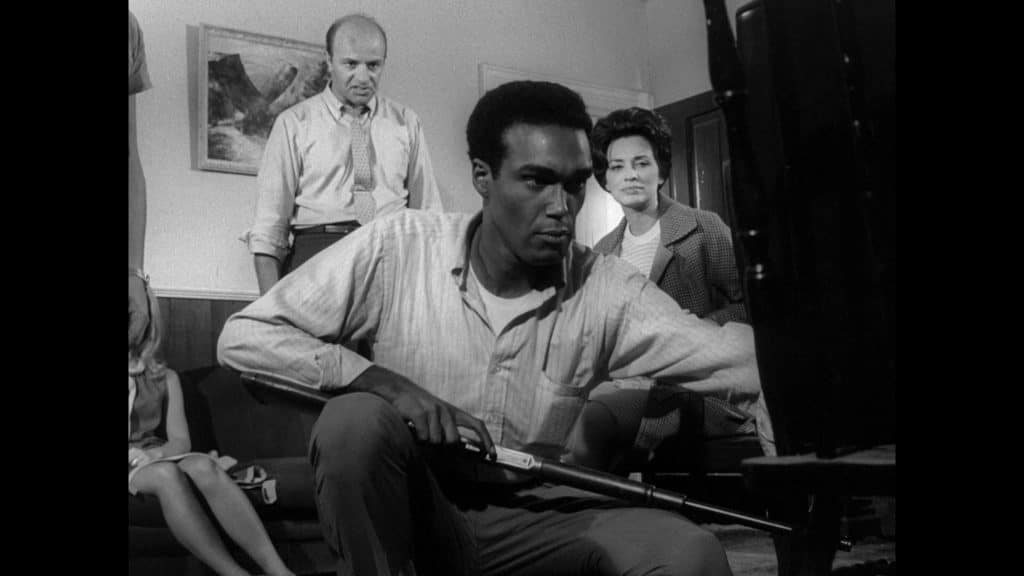
Let’s Scare Jessica to Death (1971)
Directed by John D. Hancock
Filmed in Chester Connecticut
Budget: $250,000
The beauty of a psychological horror drama is that you can skew reality with perceived reality and it allows you to live vicariously through the troubled person’s perception. Such is the dreamy tale of Jessica (Zohra Lambert) who in an attempt to get to a better state of mental health with time at a country farm, instead finds herself trapped in a creepy village, with rumors of a vampire on the loose, a mysterious strange girl, and the collapse of all her support system all furthering her latent madness. It is a perfect example of an unreliable narrator, and the film had a lot of ambiguity that allowed a lot of curious interpretations of the film.
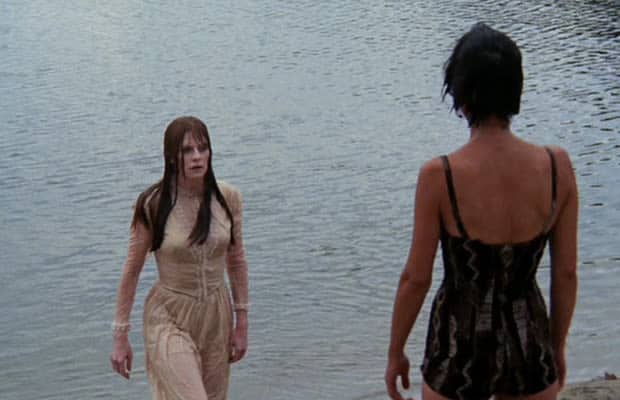
Blacula (1972)
Directed by William Crain
Filmed in Los Angeles
Budget $500,000
The seventies were an era where independent films exploded, as filmmakers looked to exploit new niche markets that emerged with the changing culture. Biker gang movies, Kung fu movies, women in prison movies, and blacksploitation. This was the dawn of grindhouse. The high-water mark for blacksploitation horror is clearly Blacula, with the menacing and elegant William Marshall playing it straight while the context he was performing in was decidedly zany. Done on the cheap and looking to capitalize on a new craze, Blacula ended up being a classic.

The Last House on the Left (1972)
Directed by Wes Craven
Filmed in New York, NY
Budget: $90,000
Savage and mean, Wes Craven’s introduction to the movie public took advantage of the changing movie rating landscape, and to this day still stands as the touchstone rape revenge movie. It is a movie that still troubles, and it set the template for future provocative films that would tear through any cultural sensitivities. As such it was both lauded and loathed. It is noteworthy that Craven’s future work, including The Hills Have Eyes and A Nightmare on Elm Street, could be considered soft by comparison.
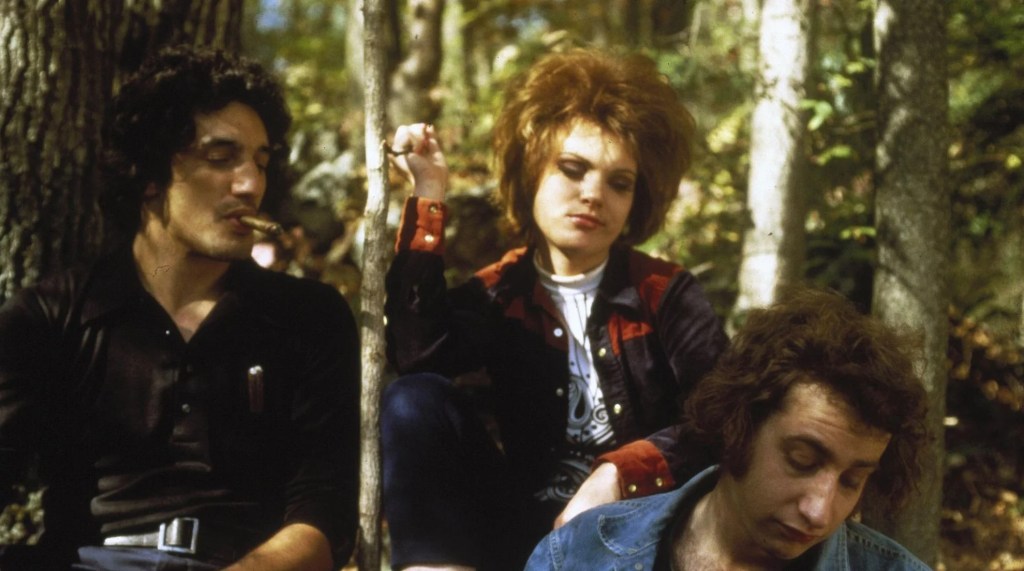
Messiah of Evil (1973)
Directed by Willard Huyck
Filmed in Malibu, California
Budget: <$1,000,000
Considered to be a “one-off oddity” for the era, where writer-directors would come up with their own projects and then find a producer and distributor interested in helping create their visions. It is in opposition to the way a lot of movies in the ’80s would happen where a director would be selected to try and launch a profitable franchise. Movies like Messiah of Evil never got sequels, perhaps because the stories would get a little trippy.
Messiah of evil follows Arletty (Marianna Hill) who is trying to uncover the fate of her artist father who has left cryptic messages to her, which guide her to a mysterious beach town of Point Dume. Her father has gone missing, and she enlists the help of some traveling artistic eccentrics. They discover the town has been overrun with a cannibal death cult, and the Blood Moon has invoked doom upon Point Dume. The plot jumps around a bit, but this is a great slice of surreal seventies horror for those not familiar with the title.
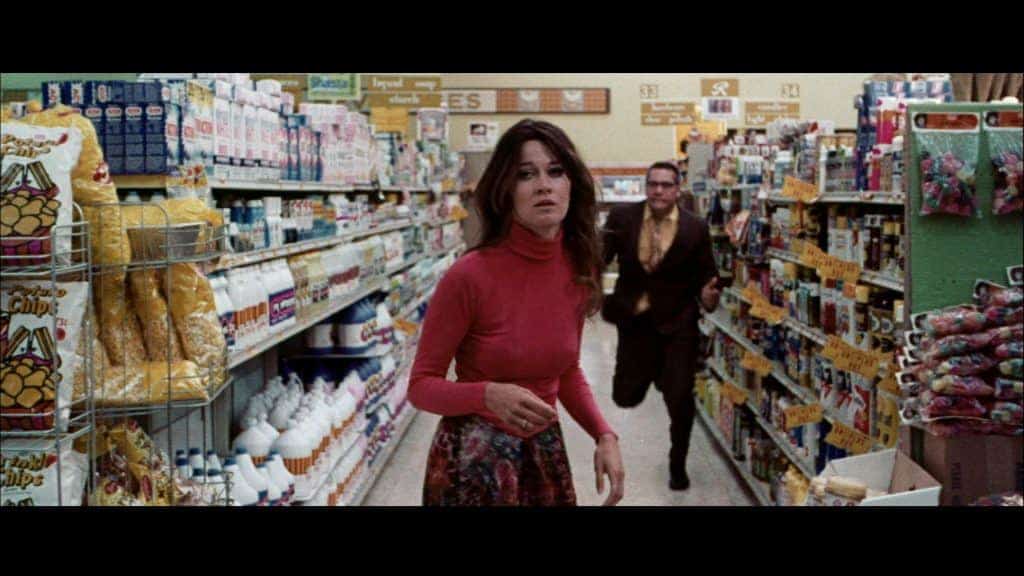
The Texas Chainsaw Massacre (1974)
Directed by Tobe Hooper
Filmed in Bastrop, Texas
Budget: $300,000
Another challenger for the most significant independent American horror movie is the Tobe Hooper landmark that is The Texas Chainsaw Massacre. It is strange to think that a film could benefit from having its master reels chemically burned in the development process. The stained and abused quality of the film stock set a mood that suggested the inescapable Texas heat and the distorted degeneration that is the Sawyer family. The title alone was enough to create a stir, and few films are as notorious to even the uninitiated as TTCM.

It’s Alive! (1974)
Directed by Larry Cohen
Filmed in Los Angeles
Budget: $500,000
Larry Cohen built a reputation of being a guerilla filmmaker. No permit for his movie? Don’t sweat it! We’ll do it anyways. He was a risk-taking maverick director who kept his projects lean and mean by being flexible and improvising on the spot. Cohen maximized his time with the cast and crew, by keeping everyone on board to shoot another film Hell Up in Harlem on the weekends, meaning it was a 7 days a week shoot schedule for the entire team. It’s Alive proved that sometimes the simplest marketing tool, the humble movie poster can make all the difference in the world. Initially, a flop when released in 1974, it got rebranded in 1977 with the now-iconic poster with the demonic claw dangling out of a baby carriage and it completely turned the fortunes of the film around.
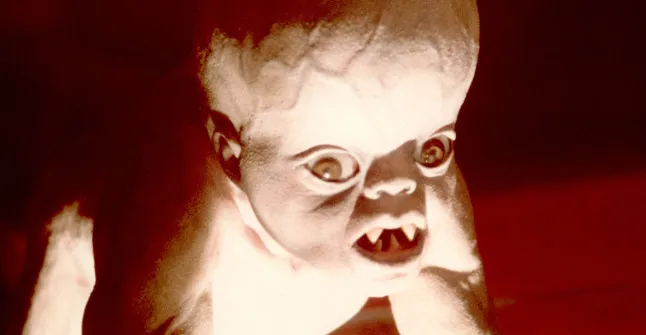
Grizzly (1978)
Directed by William Girdler
Filmed in Clayton, Georgia
Budget: $750,000
Cut down far too early in a plane crash, William Girdler was an independent horror director who built his reputation on super-cheapie films like Asylum of Satan, Three on a Meathook, and Abby, the survival horror picture Grizzly actually was a step up in project budget for Girdler. It was produced to capitalize on the Jaws craze, and it ended up earning $39 million off of its tiny budget. He would die a mere two years later, scouting for a movie in the Philippines, and it makes you wonder what could have been. If you look at the careers of many others on this list, it is not hard to believe he would have built a reputation on par with any of the other horror legends on this list.

Halloween (1978)
Directed by John Carpenter
Filmed in Los Angeles
Budget: $325,000
Speaking of legends, perhaps no name is more synonymous with the horror medium than John Carpenter. With all the massive success up to the present day of the Halloween franchise and the numerous significant horror films that Carpenter directed, it all started here as an independently funded micro-budget horror film. Carpenter’s storytelling skill jumps off the screen as he created perhaps the definitive slasher film. His ability to coach his actors to great performances is also on display with the elevation of Jamie Lee Curtis to icon status. The fact that even with budgets that would be 100x what it cost Carpenter to do it the first time, and still the original has not been topped, makes you appreciate the achievement even more.

Phantasm (1979)
Directed by Don Coscarelli
Filmed in Oakland, California
Budget: $300,000
Who would fund a bizarre project like Phantasm? The answer is… probably nobody. A major studio would have probably looked at this script and laughed at the science fiction horror mashup and toss it in the trash bin. So thank goodness for independent horror! This tale of zombie alien dwarfs, a shape-shifting killer undertaker, killer floating spheres, and an unlikely pair of protagonists all mashed into one crazy stew of horror. This is completely the brainchild of Don Coscarelli, who wrote, directed, edited, and produced the whole thing.
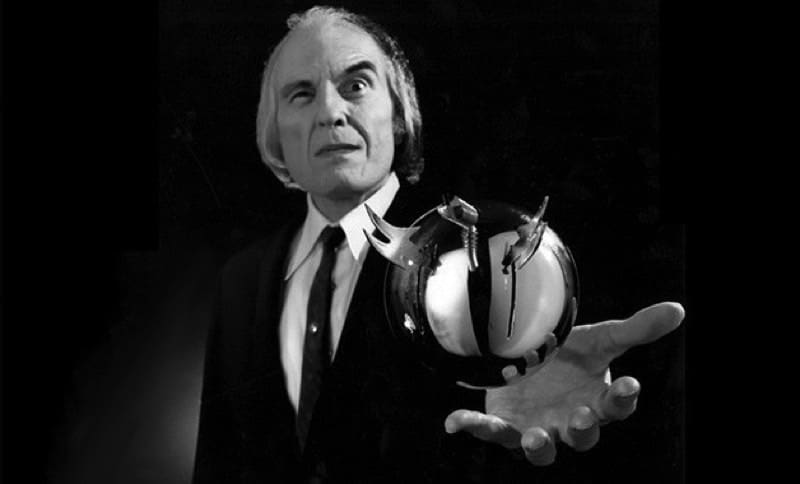
The Evil Dead (1981)
Directed by Sam Raimi
Filmed in Marshall, Michigan
Budget: $350,000
It’s the definitive cabin in the woods horror movie. Through the retrospective lens of history, the movie is a fun gory romp, but it should not be forgotten that this was considered an extreme button-pushing movie at the time. This was Sam Raimi and Bruce Campbell’s go-big-or-go-home effort and despite the censor’s best attempts to bury this film, it found a huge audience of adoring fans. Raimi refused to rest on his laurels, and he and Campbell returned to reboot the film with a more humorous overlay, and the Evil Dead 2 cleaned up the rough edges and made a more accessible and engaging version of the original story while maintaining the geysers of blood and vomit that made the first Evil Dead so popular.
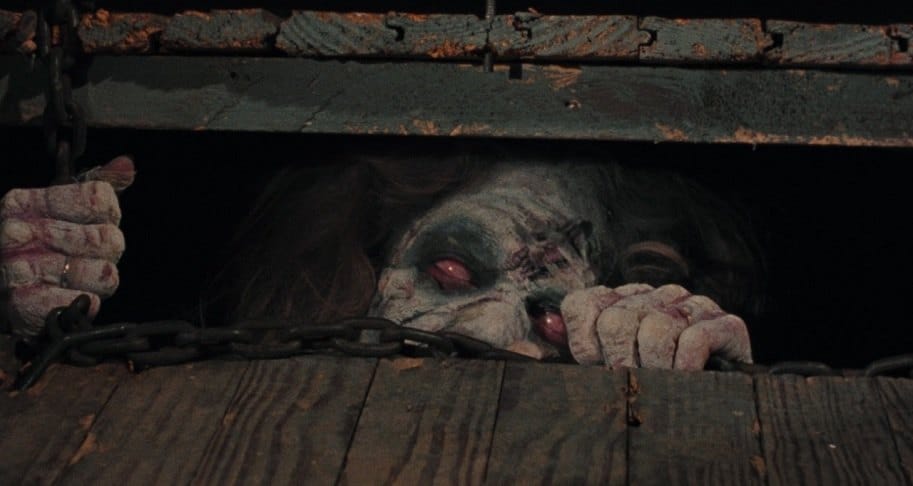
The Toxic Avenger (1984)
Directed by Lloyd Kaufman
Filmed in Boonton, New Jersey
Budget $475,000
Bad taste elevated to high art? Almost. Lloyd Kaufman, a brilliant, educated man of deep thoughts and tawdry tastes gave us a gruesome and questionably lovable anti-hero for the ages with Toxie. The Toxic Avenger is the structure upon which a mountain of cheap exploitations from Troma Films is built. It is unapologetically trashy and without question entertaining. The nerd turned monstrous superhero went places that no Marvel film could ever dream of attempting… and probably wouldn’t want to. Troma is the anti-Disney.
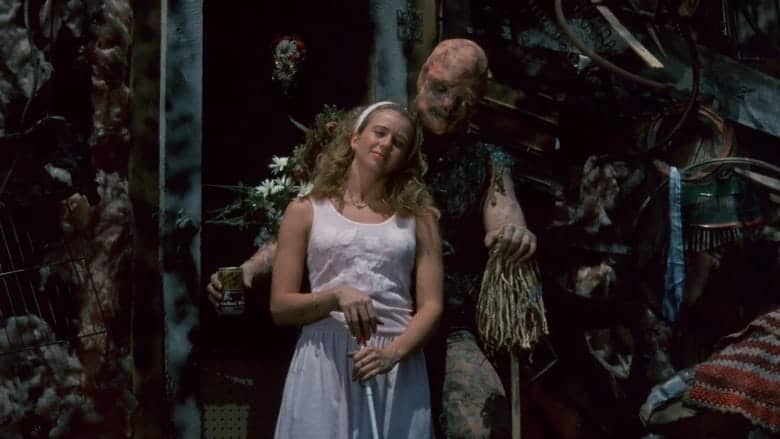
Re-Animator (1986)
Directed by Stuart Gordon
Filmed in Los Angeles
Budget: $900,000
Stuart Gordon tapped (rather loosely) into the works of H.P. Lovecraft for the mad science of Re-Animator, his first of what would be many straight-to-video classics. His team up with the inimitable oddball Jeffrey Combs and the vivacious Barbara Crampton was a combination that would go on to do many great things together. The comic timing, capitalizing on the frenzied script, the fantastic old-school gory practical effects, and the ability to maximize the potential of every shot created a VHS classic for the ages.

Puppet Master (1989)
Directed by David Schmoeller
Filmed in Riverside, California
Budget: $600,000
Quick. Name the horror movie franchise with the most sequels. It’s Puppet Master and its 16-movie franchise. For anyone over 35 years old, you will have seen a Blockbuster Video shelf of Full Moon Videos. Producer Charles Band re-tooled Empire Pictures, previously the home of the likes of Re-Animator, Scanners, Rawhead Rex, Ghoulies, From Beyond, and a whole lot of really bad movies. He realized that running B-movies in theaters was no longer viable, and created Full Moon and the flagship franchise was spawned from tiny toy terrors.
Blade, Jester, Pinhead, Six-Shooter, Torch, and a multitude of deadly toys caught the imagination of the video browsing crowd. The nature of the puppets also allowed for inexpensive practical effects, and Full Moon was able to create a rich back history in this little universe, and generated a continuity rare for a franchise with this many sequels.
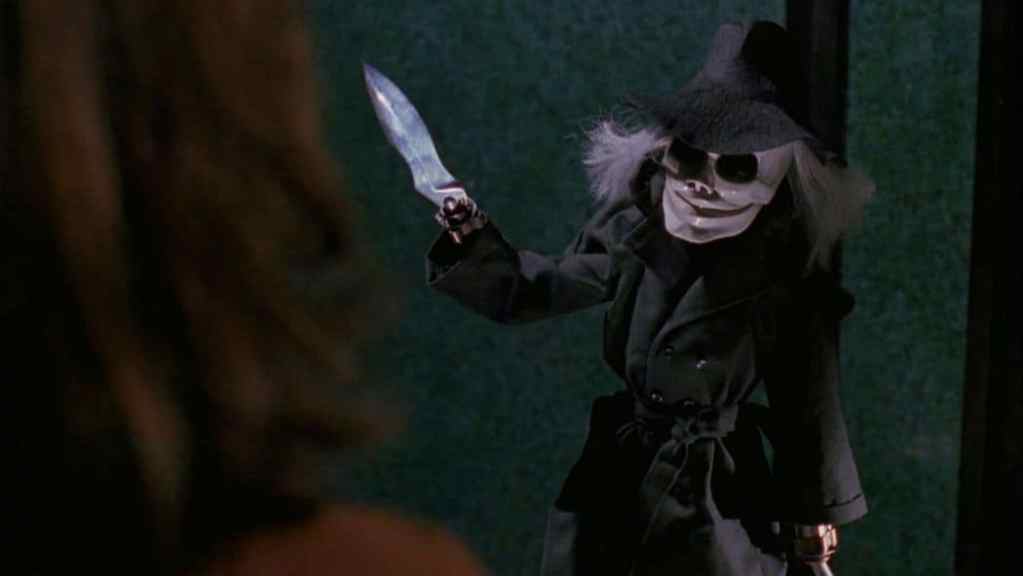
The Blair Witch Project (1999)
Directed by Daniel Myrick and Eduardo Sanchez
Filmed in Patapsco Valley State Park, Maryland
Budget: $60,000
Perhaps the most famous rags to riches story in film history is The Blair Witch Project, where word of mouth and an impressive viral marketing campaign attracted audiences in droves. Genuinely scary, the film was so authentic feeling that it fooled many people into thinking this was an actualdocument of teenagers who fell to their doom in the Maryland woodlands. It also proved that the low-budget shaky cam format could be effective with a documentary-like presentation, and the ideal way to try and lend some authenticity to the film. The film eventually grossed $248,639,000, a gob-smackingly profitable movie in the end.
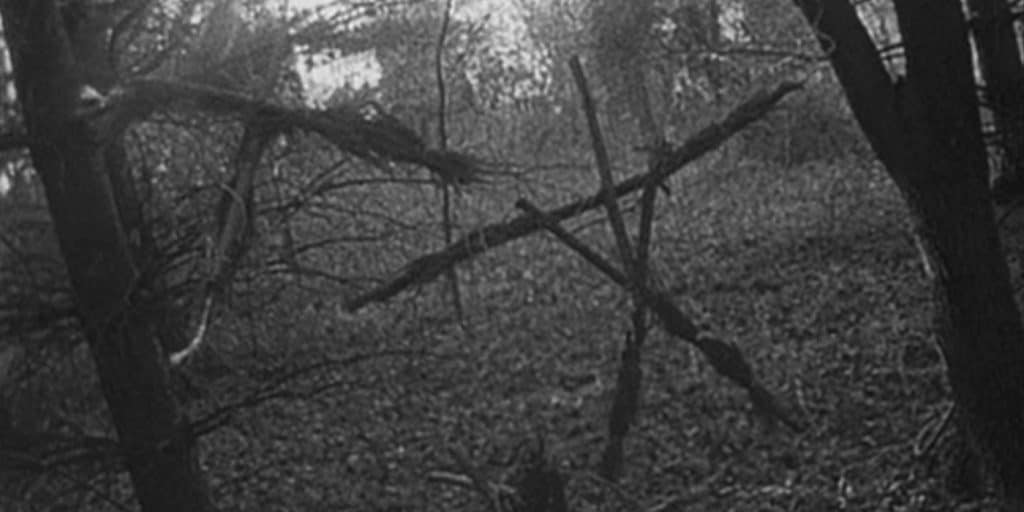
Session 9 (2001)
Directed by Brad Anderson
Filmed in Danvers, Massachussetts
Budget: $1,500,000
Sometimes all it takes is to find a fantastic set to use as a backdrop. The condemned and abandoned Danvers State Hospital was the perfect location for a ghostly tale of psychoses and transferable madness. It is a movie of mood and suggestion, and it will absolutely get under your skin as the asbestos abatement crew makes the regrettable decision to play some old reels of a schizophrenic patient and his psychologist sessions, with the lunacy growing more and more until the fateful reel of Session 9. Yes, I pushed the budget here, but Session 9 seems so emblematic for all the other criteria that it was close enough.
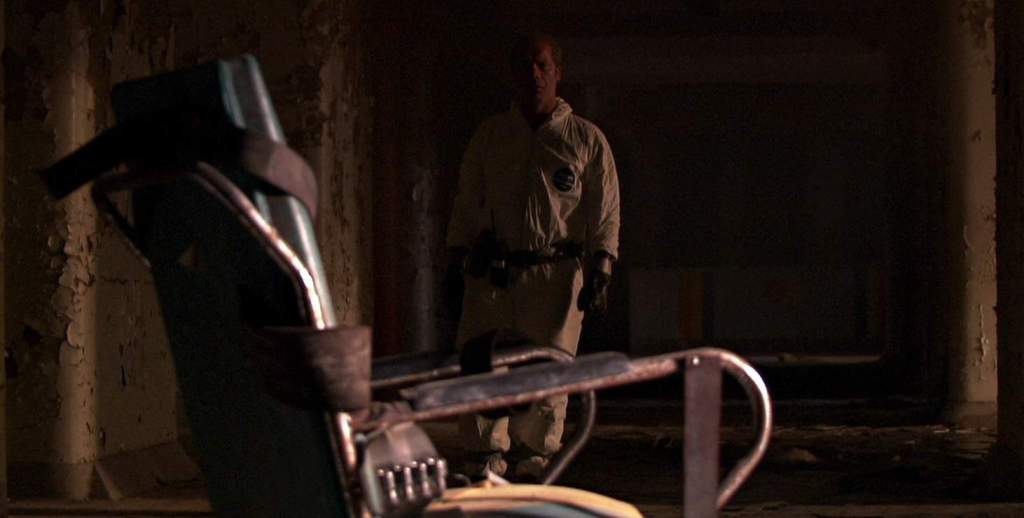
May (2002)
Directed by Lucky McKee
Filmed in Los Angeles
Budget: $500,000
One way to make an effective independent movie is to come up with a great character study script. No need for flashy effects or a big-name star actor, just a curious deviant who you can really sympathize with. May is the perfect example of this. Angela Bettis is May, an awkward girl with a lazy eye and an unusual fetish for body appendages. When she has a hard time making friends the traditional way, she sets out to make one of her own. Literally. It is an amusing, disturbing, and heartbreaking portrayal, and one of the most nuanced central horror subjects you’ll encounter. Too weird for a studio release, perfect for art-house horror.
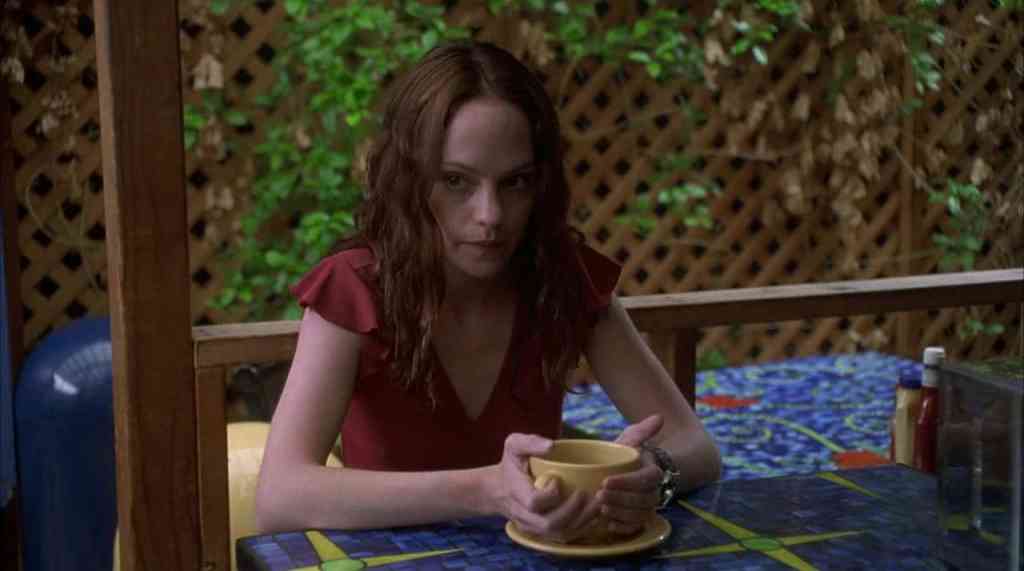
Open Water (2003)
Directed by Chris Kentis
Filmed near the Bahamas
Budget: $500,000
If you are going to make a film about scuba divers lost at sea in shark-infested water, how do you get the most authentic film possible? Go swimming with the sharks, literally. How do you get the authentic fear to be conveyed on screen? Hire an actress (Blanchard Ryan) who is deeply afraid of sharks, and put her in the open ocean. Of all the movies on this list, this is the one that feels the most real. No SFX, no gimmicks, just the real thing. Movies that rely upon water effects are notoriously expensive to pull off unless you do it documentary style as Kentis did. And the results are absolutely terrifying.

Saw (2004)
Directed by James Wan
Filmed in Los Angeles
Budget $1,200,000
OK, this one pushes the Million dollars or less criteria by a little bit. It is still emblematic of the independent horror effort. A young and talented director and writer (Leigh Whannel) use the medium of horror to showcase their talents and do so by pushing the concepts to the gory limits. Saw is perhaps the starting block for the “Torture Porn” movement that lasted for a good chunk of the early 2000s. It amassed $103,911,669 in worldwide earnings, justifying a raft of sequels and copycats. It also is emblematic of the tricks and traps subgenre and also fits the no-good-options trope to a tee. Influential in so many ways, it made Wan a horror director of the first rank, and Whannel a mentor to many up-and-coming genre filmmakers.
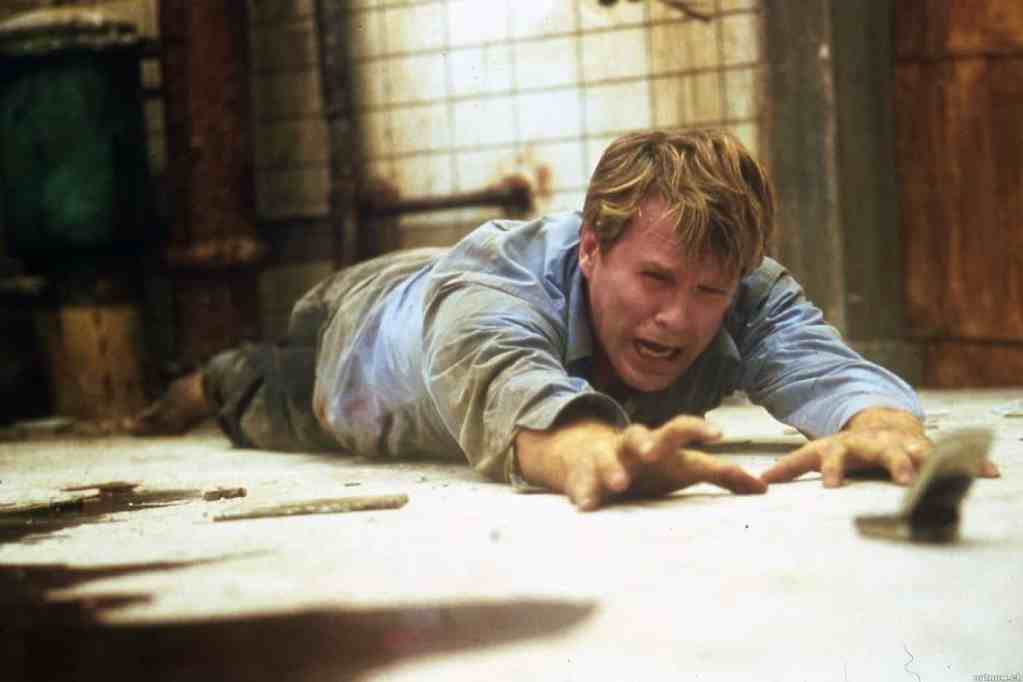
The Call of Cthulhu (2005)
Directed by Andrew Leman
Filmed in Glendale, California
Budget: $50,000
The works of H.P. Lovecraft can be hard to interpret for the big screen. The hyper-literate language and dream state ideas of madness and Elder Gods can be hard to portray effectively. Leave it up to the H.P. Lovecraft Society to create the definitive Cthulhu film, treating it as a 1920’s silent film complete with vintage frame rates, lighting, makeup, and dialog cards, making it period appropriate to the time that story was created. Unlike many contemporary interpretations of the Mythos, the HPL Society has managed to do a faithful adaptation of the source material.

Paranormal Activity (2007)
Directed by Orin Pelli
Filmed in San Diego, California
Budget: $15,000
You read that right. Paranormal Activity was created for the rough price of a used car. This is the film that allowed for the ascendancy of Blumhouse Productions. In the annals of film history, perhaps only The Blair Witch Project can match the profitability of this franchise. The film generated a staggering $193,855,000 worldwide on a lunch-money budget. It helps that the movie is one of the most genuinely frightening films of the era. Pelli and his crew managed to turn the limitations of stationary security cameras into a storytelling strength. Few found footage films can hold a candle to the continuity and solidity of the central premise of Paranormal Activity and its immediate sequel.
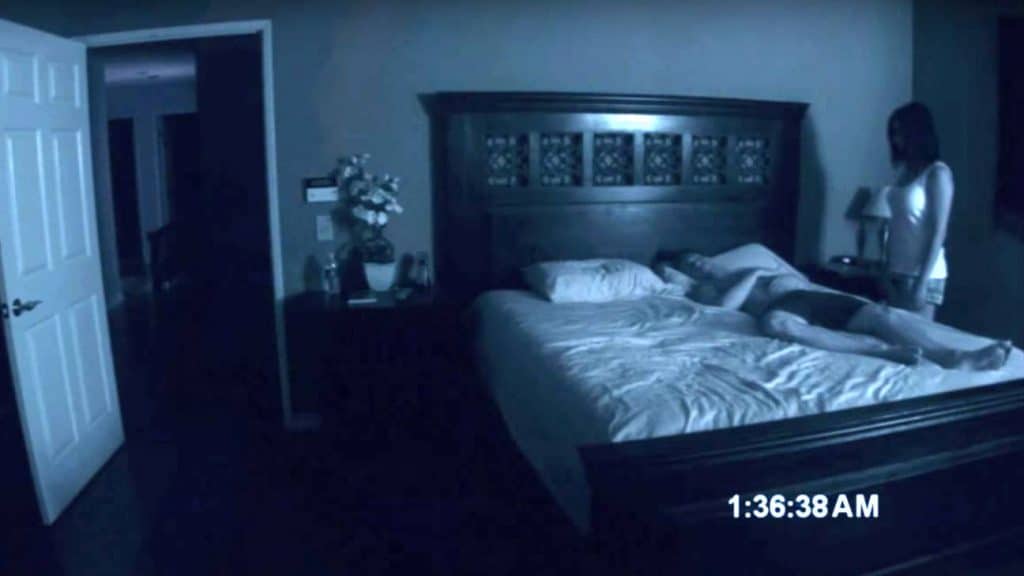
Monsters (2010)
Directed by Gareth Edwards
Filmed on location in Guatemala, Belize, and Texas
Budget: $500,000
The remarkable thing about Monsters is that Gareth Edwards, a digital effects artist by trade, proved to be an opportunist. Edwards had been wanting to do a War of the Worlds type story, but in a part of the world where “nobody cared” about the consequences. When a hurricane ravaged the Central American Coast, it provided a built-in real-life destruction that would simulate the aftermath of kaiju without having to use special effects to pull it off, thus saving the budget to use his effects talents to digitally show the titanic mutant cephalopods.
He also just cast real-life married couple Scoot McNairy and Whitney able as two people trying to work their way back to the US through the infected zone of northern Mexico. His minimal script was highly improvised and was lean on dialogue. Edward’s creative thinking towards a modern stompy monster movie earned him plaudits from critics and the chance to direct the Godzilla reboot in 2014.
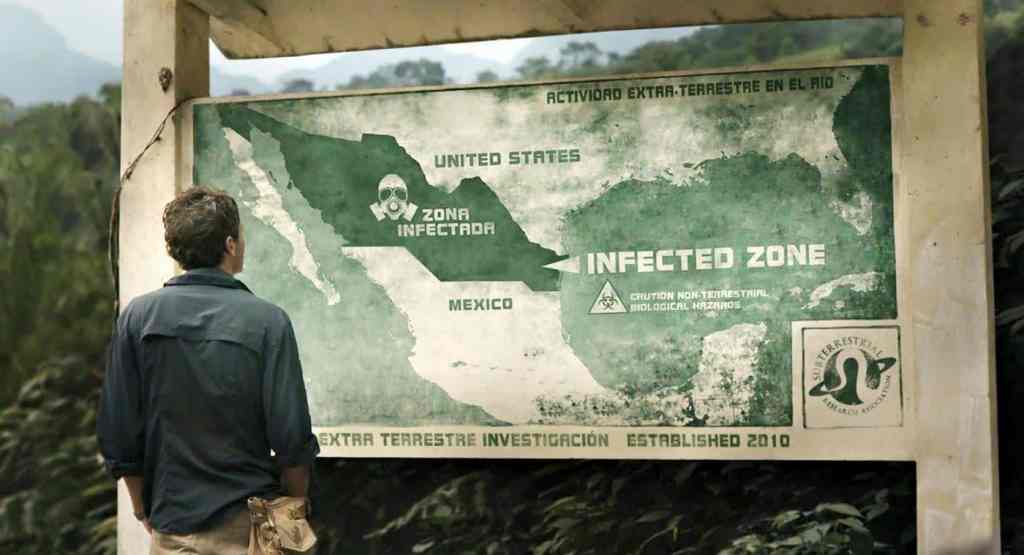
You’re Next (2011)
Directed by Adam Wingard
Filmed in Columbia, Missouri
Budget: $1,000,000
The modern golden age of horror has allowed filmmakers to get access to better equipment, and are no longer relegated to using cheap filmstock and used equipment. You’re Next is a great-looking movie that has all the feel of a big studio production, but maintains the ferocity and audaciousness of the independent film that it is. A high water mark for home invasion horror, You’re Next starts with a bang, and keeps up the intensity from the chaotic opener all the way to the satisfying finish. Sharni Vinson’s ultimate survivor Erin is perhaps the most formidable final girl of all time.
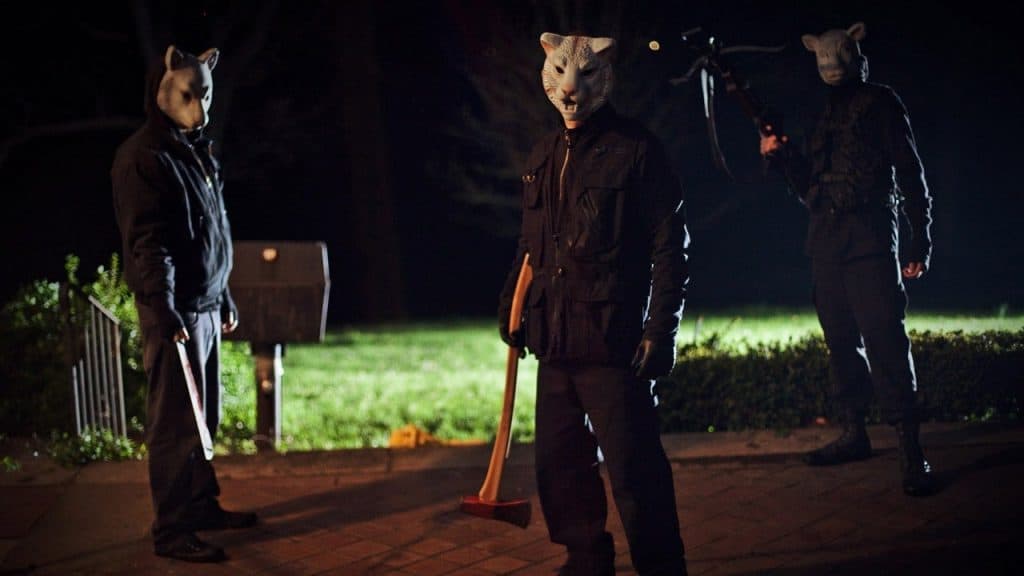
It Follows (2014)
Directed by David Robert Mitchell
Filmed in Detroit, Michigan
Budget: $1,000,000
Further evidence of the new Golden Era of American Horror is It Follows. It takes a simple premise: Your sexual promiscuity will come back to haunt you, literally. Though the AIDS crisis had largely been controlled by the time this movie came out, its central theme of a sexually transmitted curse that you can only get rid of by passing it on to your next partner was potent. This curse cannot be stopped and can come at you in the most innocuous forms. Rarely has a shuffling old lady been scarier. Maika Monroe is an actress cut above the norm for this type of role and has quietly become one of the most reliable genre actresses around.
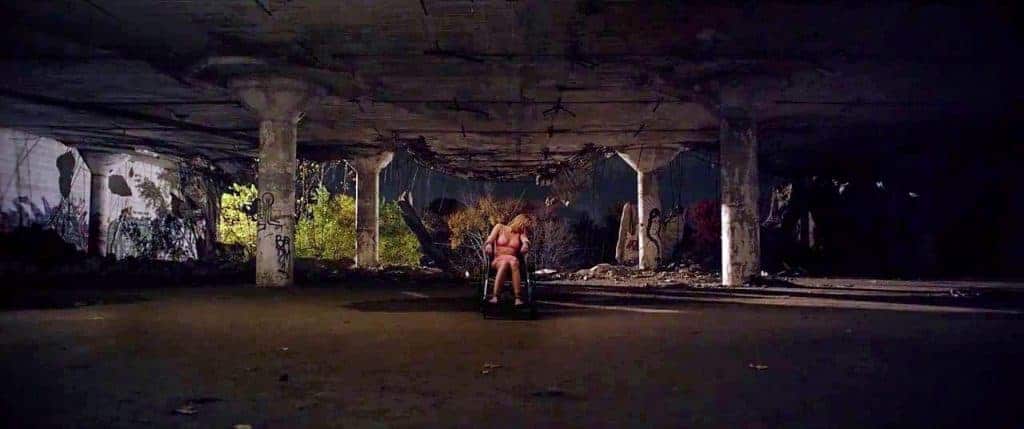
A Girl Walks Home Alone at Night (2014)
Directed by Ana Lily Amirpour
Filmed in Bakersfield, California
Budget $491,910
Ana Lily Amiropour’s magnificent debut opus pulled off quite a stunt. She managed to turn Bakersfield into an Iranian Ghost-town. This Persian language film is actually an American production and not a foreign film, but you wouldn’t know it. Set in strikingly beautiful contrasting black and white, “The first Iranian Vampire Western” is a somber and fascinating story of a most unlikely hijab-wearing vampiress and her exploits in a town full of self-destructive characters. The movie was a huge critics darling and award winner on the festival circuit and announced that a new powerful female directing voice was working in the genre.

The Invitation (2015)
Directed by Karyn Kusama
Filmed in Los Angeles
No Budget Information
Trust and betrayal are always good dramatic tension builders. Add in marital strife, an awkward big social gathering, and a death cult, what could possibly go wrong? Kary Kusama uses a house party and a bevy of terrific character actors to layer on suspense, tension, and end-of-the-world repercussions in this much-loved but largely unheralded movie. This is a movie that builds from uncomfortable to apocalyptic in ways that you will not expect. It is also full of familiar actors who you will think to yourself… where do I know them from?
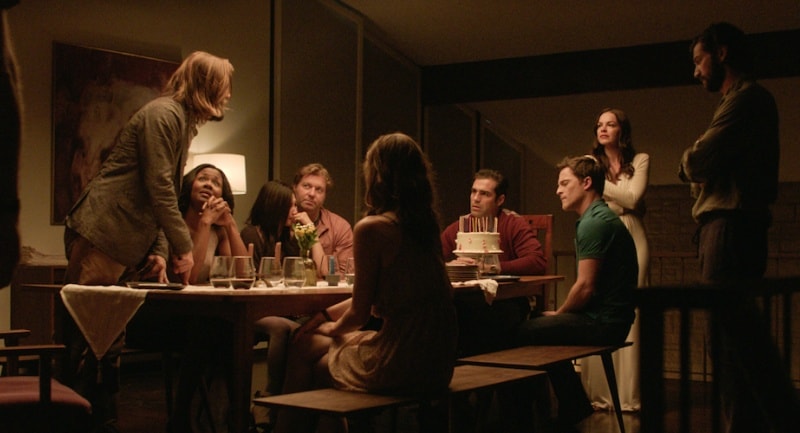
The Transfiguration (2016)
Directed by Michael O’Shea
Filmed in Brooklyn, NY
No Budget Information
Sometimes a writer or director will have a desire to do a quiet little horror drama. A relationship movie, with teeth to it. A major Studio will likely not see the value of it, even if the artistic merits credits scream for an audience. The Transfiguration follows Milo, a troubled teenage boy being raised by his big brother in the slums of NYC, who has an unhealthy fascination with vampires, to the point where he starts acting out like a vampire, attacking people and trying to suck their blood, which doesn’t go the way he had hoped. Fortunately, he falls for a neighbor girl, Chloë Levine, who has suicidal tendencies, and the two of them become an unlikely couple bonded by their own insecurities. It’s a weirdo teen romance that only an independent film would dare pull off.

Hush (2016)
Directed by Mike Flanagan
Filmed in Fairhope, Alabama
Budget: $1,000,000
Mike Flanagan may be the NEXT BIG THING when it comes to handing out mantles of great horror directors, despite his relative youth. It doesn’t hurt that he has Stephen King on his speed dial, with projects like Gerald’s Game and Doctor Sleep under his belt. He rose to prominence with his direction of Oculus, but it is Hush that caught my attention. The story of a deaf writer who has a masked killer stalking her, who has to turn her vulnerabilities into advantages when the killer manages to break into her home. The tension is almost unbearable, as the polt constructs are masterfully executed and the editing is razor-sharp… keeping you in lockstep with Kate Siegel’s Maddie who is entirely convincing as a deaf character.

The Endless (2017)
Directed by Justin Benson and Aaron Moorhead
Filmed in Descanso, California
No Budget Information
The directing partnership of Benson and Moorhead are the poster children of smart independent horror films in this new golden age of horror. Sometimes, perhaps a bit too intellectual or bookish for some tastes, this duo is a combination of the gauzy cinematography of Moorhead and the literate writing of Benson. The Endless also casts the two of them as brothers who, having survived a UFO death cult immersion, are lured back to the cult years after they thought the group had disappeared. The time and space twisty cataclysm that ensues is a wholly unique vision and story. The duo proved to be so successful that Marvel hired them to direct some of the Moon Night series for Disney +.
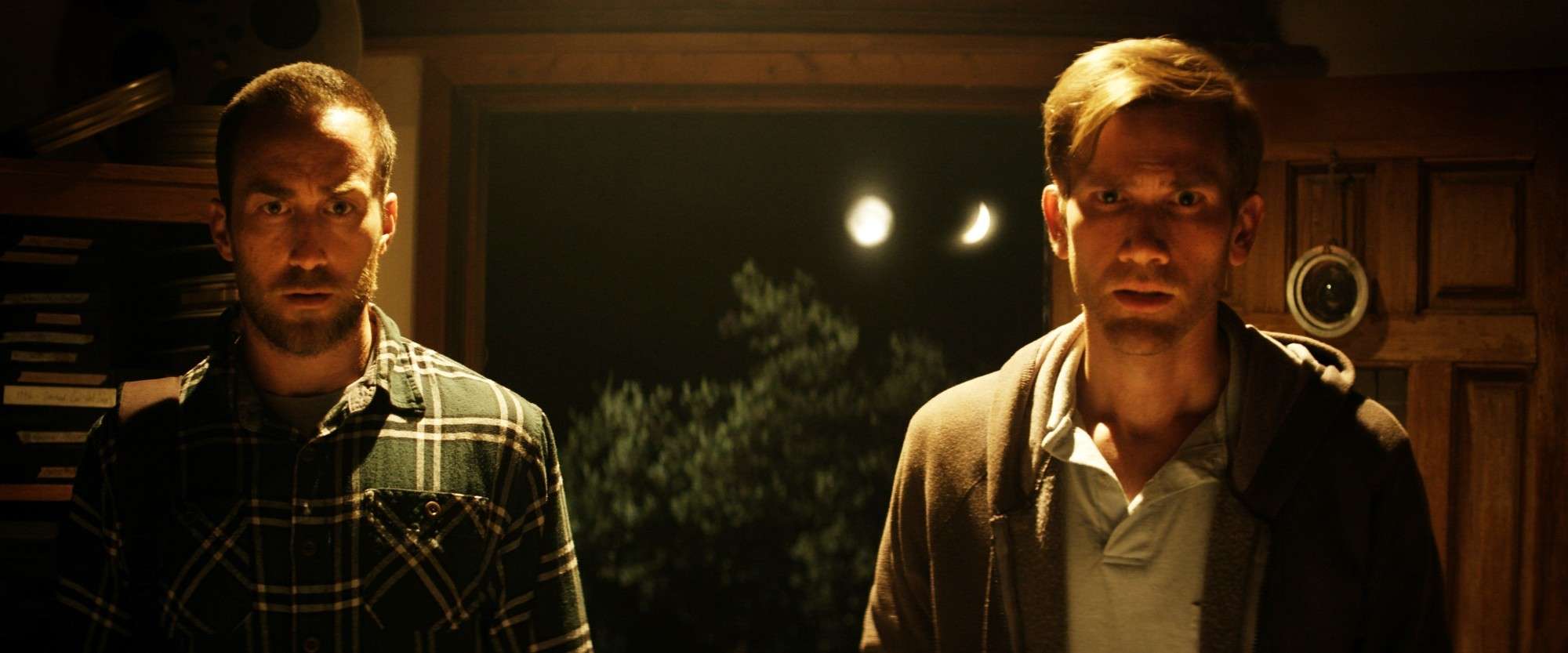
The Vast of Night (2019)
Directed by Andrew Patterson
Filmed in Whitney, Texas
No Budget Information
A quiet little film showed up at Overlook in 2019, and it surprised everyone by winning best in show. The Vast of Night punches way above its weight class. It is about the power of narrative and cinematic framing to establish a mood of dread and suspense, as a small New Mexico town in the 1950s is visited by a malevolent alien presence. The old-school analog technology gets married to long sweeping single takes and echoes of radio signals into the darkness.

Depraved (2019)
Directed by Larry Fessenden
Filmed in Kingston, NY
No Budget Information
If Roger Corman was the dominant independent producer from the 1950s through the 1970s, helping nurture and develop young directing talent through independent genre fare, then Larry Fessenden is the contemporary equivalent. He is a willing partner and mentor to dozens of successful young directors, and you will see him show up as an actor to help support these ascendant talents. He’s been a pretty successful independent director in his own right. Depraved, his modernization of the Frankenstein story may very well be the best story of its type since Bride of Frankenstein.
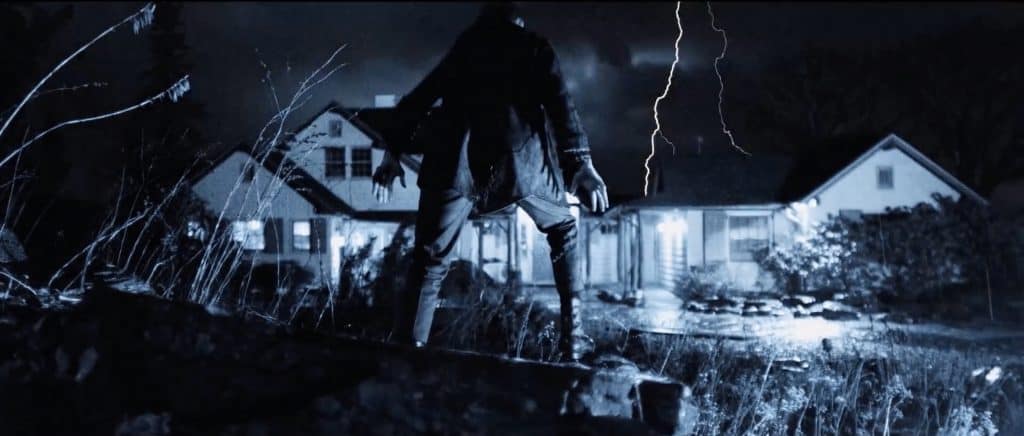
Lucky (2020)
Directed by Natasha Kermani
Filmed in Los Angeles
No Budget Information
If you want to keep track of somebody who will be making a differenc in independent horror cinema, look no further than Brea Grant, who wrote and starred in Lucky. It’s an autobiographical interpretation of Grant’s frustrations with being stalked herself. In Lucky, May (Grant) is having recurring nightmares of a man who every night comes in and tries to kill her and her husband. The visions become palpably real, and they keep repeating even though she bloodily dispatches each killer attempt on her life… and nobody will believe her.
Grant has been a genre character actress since 2007, and now finds herself in the horrible bind that many actresses run into when they get older and the roles get tougher to come by. While she continues to act in horror films (After Midnight and The Stylist, recently), she also has established herself as a strong writer, director (independent horror films 12 Hour Shift and Torn Hearts), comic book author, and mentor to young directors like Natasha Kermani. Grant has become something of a jack-of-all trades, and you can see that happening with other actresses like Barbara Crampton who is now getting into being a producer, as Hollywood has opened the door ever so slightly for more women to work behind the camera. It shouldn’t be a surprise that independent horror is where these opportunities have at long last been supported.

Val (2021)
Directed by Aaron Fradkin
Filmed in Los Angeles
No Budget Information
This is a personal favorite. This horror-comedy plays on the Devil’s temptation, as high-class escort Val (Misha Reeves) finds a wanted man, Fin (Zachary Mooren) on the run hiding out in her house. Despite the obvious danger, she is intrigued, and nothing is as it seems… particularly for Fin. This is a triumph of style and wit. The dialogue is crackerjack clever, and Reeves owns the screen as a saucy damsel who is not in as much distress as you might expect. The costumes and color palette pop, and the lovely house was a fantastic set piece. This is how you maximize your film assets. Who knows if in ten years anyone will remember this film, but it has made a mark on me.
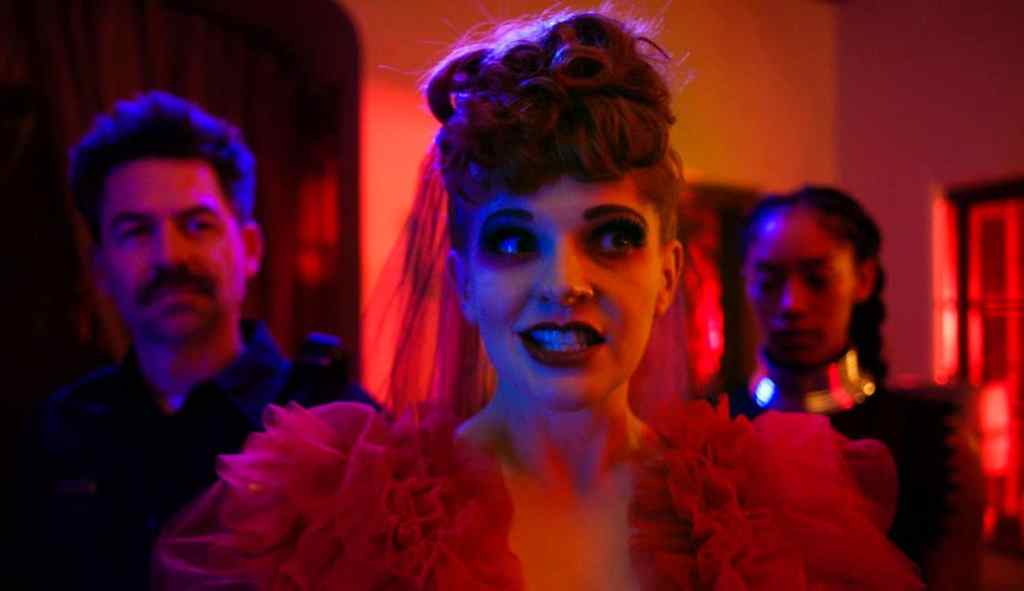
Swallowed (2022)
Directed by Carter Smith
Filmed in Brownville, Maine
No Budget Information
In order to make a film that he wanted without studio interference, Carter Smith went the opposite route of what many directors do. Having started his career with large budget studio production (The Ruins), he realized that his next foray into horror would be more controversial. Swallowed follows the misadventures of best friends, one of whom is headed to California for a budding gay porn career, and his lifelong bestie wants to send him off to Los Angeles with a monetary nest egg. Unfortunately, to get that nest egg requires an unsavory drug mule run across the Canadian border, and things go horribly wrong.
Swallowed pushed at the conventional boundaries with its tropes and its execution, which is not exactly what your mainstream studio executives would typically back. So, Smith went full independent, even using a cabin that he helped build with his father for the production. Take note, risk-takers, sometimes you just have to do it yourselves.



